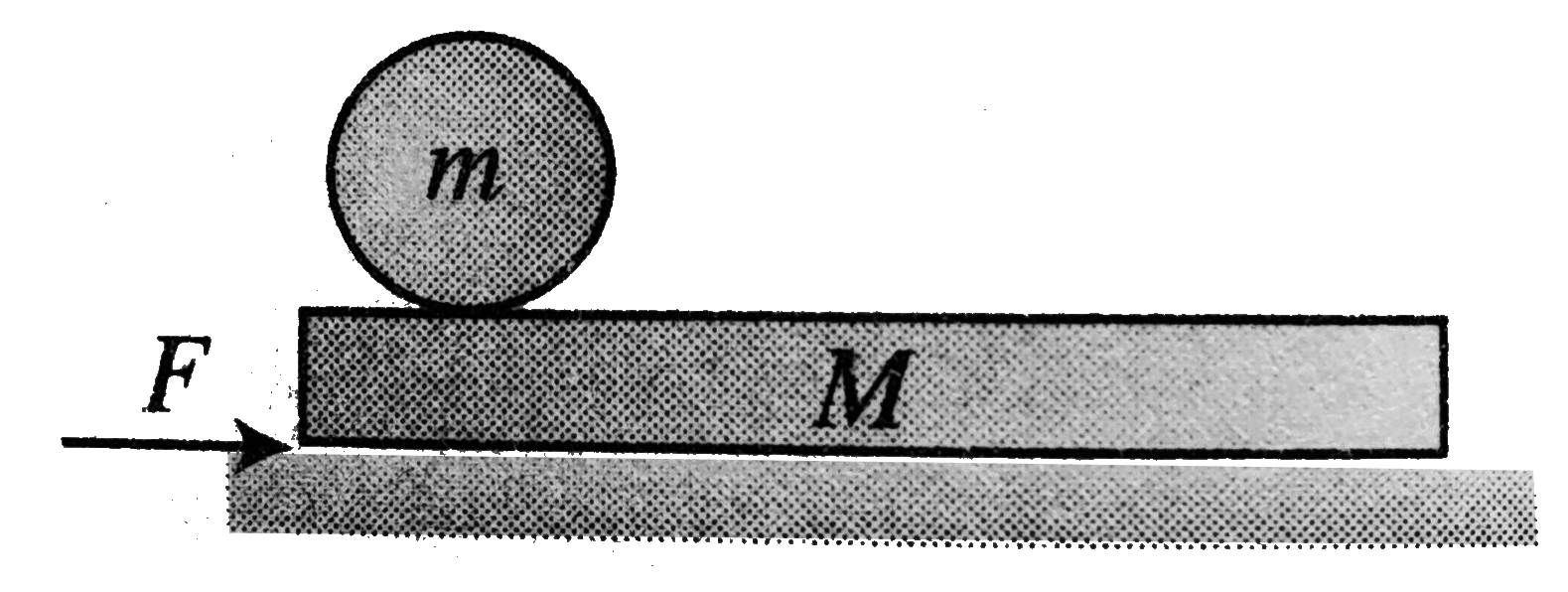A uniform elastic plank moves due to a constant force F0 applied at one end whose area is S. The Young's modulus of the plank is Y. The strain produced in the direction of force is
Fo2SY
FoSY
2F0SY
√2F0SY
The correct Answer is:A
To find the strain produced in the direction of the force applied to a uniform elastic plank, we will follow these steps:
Step 1: Understand the relationship between stress, strain, and Young's modulus
The relationship between stress (σ), strain (ε), and Young's modulus (Y) is given by the formula:
Y=StressStrain
Where:
- Stress (σ) = F0S (Force per unit area)
- Strain (ε) = ΔLL (Change in length per original length)
Step 2: Calculate the stress applied to the plank
The stress applied to the plank due to the force F0 is:
σ=F0S
Step 3: Relate stress to strain using Young's modulus
From the definition of Young's modulus, we can express strain in terms of stress:
ϵ=σY
Substituting the expression for stress:
ϵ=F0/SY
Step 4: Simplify the expression for strain
Now, we can simplify the expression:
ϵ=F0SY
Step 5: Final expression for strain
Thus, the strain produced in the direction of the force is:
ϵ=F0SY
Conclusion
The strain produced in the direction of the force applied to the uniform elastic plank is given by:
ϵ=F0SY
The relationship between stress (σ), strain (ε), and Young's modulus (Y) is given by the formula:
Y=StressStrain
Where:
- Stress (σ) = F0S (Force per unit area)
- Strain (ε) = ΔLL (Change in length per original length)
The stress applied to the plank due to the force F0 is:
σ=F0S
From the definition of Young's modulus, we can express strain in terms of stress:
ϵ=σY
Substituting the expression for stress:
ϵ=F0/SY
Now, we can simplify the expression:
ϵ=F0SY
Thus, the strain produced in the direction of the force is:
ϵ=F0SY
The strain produced in the direction of the force applied to the uniform elastic plank is given by:
ϵ=F0SY
Topper's Solved these Questions
- ELASTICITYBOOK - DC PANDEY ENGLISHCHAPTER - ELASTICITYEXERCISE - Level 2 More Than One Correct
8 Videos
- ELASTICITYBOOK - DC PANDEY ENGLISHCHAPTER - ELASTICITYEXERCISE - Level 2 Comprehension Based
6 Videos
- ELASTICITYBOOK - DC PANDEY ENGLISHCHAPTER - ELASTICITYEXERCISE - Level 1 Subjective
8 Videos
- CURRENT ELECTRICITYBOOK - DC PANDEY ENGLISHCHAPTER - CURRENT ELECTRICITYEXERCISE - All Questions
469 Videos
- ELECTROSTATICSBOOK - DC PANDEY ENGLISHCHAPTER - ELECTROSTATICSEXERCISE - Integer
17 Videos
Similar Questions
A sphere of mass m and radius r is placed on a rough plank of mass M. The system is placed on a smooth horizontal surface. A constant force F is applied on the plank such that the sphere rolls purely on the plank. Find the acceleration of the sphere.

View SolutionA thin 1m long rod has a radius of 5mm. A force of 50πKN is applied at one end to determine its Young's modulus Assume that the force is exactly known. If the least count in the measurement of all lengths is 0.01mm which of the following statements is false ?
View Solution
Knowledge Check
A wire of length L and area of cross-section A, is stretched by a load. The elongation produced in the wire is I. If Y is the Young's modulus of the material of the wire, then the force constant of the wire is
AYLABYlACYALDYAlA uniform rod of mass m. length L, area of cross- secticn A is rotated about an axis passing through one of its ends and perpendicular to its length with constant angular velocity omega in a horizontal plane If Y is the Young's modulus of the material of rod, the increase in its length due to rotation of rod is
Amω2L2AYBmω2L22AYCmω2L23AYD2mω2L2AY
A force of one newton doubles the length of a cord having cross-sectional area 1mrh2. The Young's modulus of the material of the cord is
View SolutionA uniform rope of length L, resting on a frictionless horizontal table is pulled at one end by a force F. What is the tension in the rope at a distance x form the end where the force is applied?
View SolutionA horizontal uniform rope of length L, resting on a frictionless horizontal surface, is pulled at one end by force F. What is the tension in the rope at a distance l from the end where the force is applied?
View SolutionWhen a force is applied at one end of an elastic wire, it produce a strain E in the wire. If Y is the Young's modulus of the material of the wire, the amount of energy stored per unit volume of the wire is given by
View SolutionA steel rope has length L area of cross-section A young's modulus Y [density =d] (i) it is pulled on a horizotnal fritionless floor with a constant horizontal force F=|dALg|/2 applied at one end find the strain at the midpoint.
(ii). If the steel rope is vertical and moving with the force acting vertically up at the upper end find the strain at distance L/3 from lowerr end.
View SolutionA plank of mass M is placed on a rough horizontal surface and a contant horizontal force F is applied on it . A man of mass m runs on the plank find the range of acceleration of the man that the plank does not move on the surface is μ .Assume that the does not slip on the plank

View Solution
